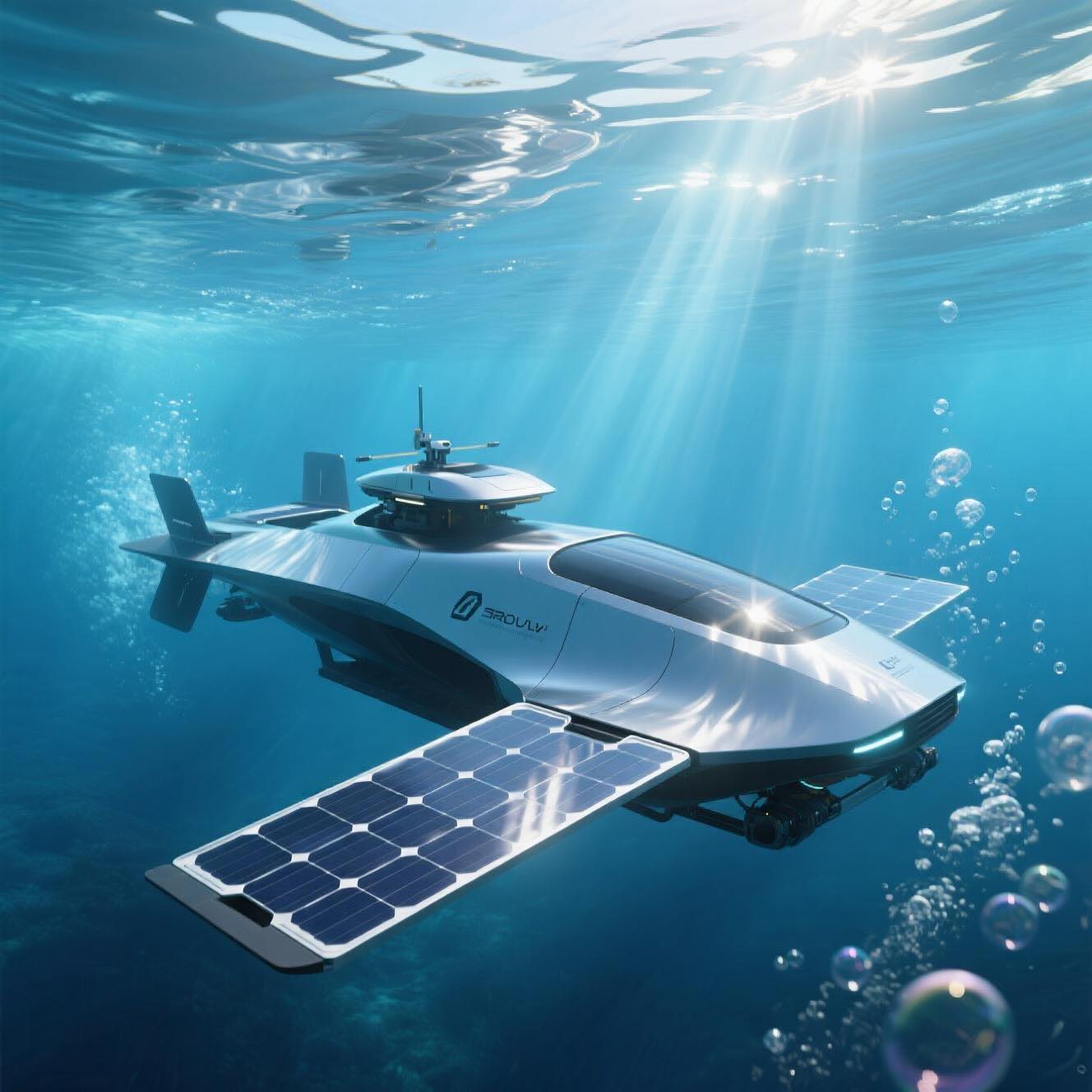
Engineers designed a solar-powered Autonomous Underwater Vehicle using AI-driven shape optimization, boosting its daily range by 22% and cabin space by nearly 3% without extra fuel.
If you’ve ever marveled at the idea of a robot silently cruising under the waves for days on end, you’re not alone. Autonomous Underwater Vehicles (AUVs) are the unsung heroes of deep-sea exploration, marine research, and naval missions. But they’ve always had one major limitation: battery life 🔋.
Now, a team of engineers from the Naval University of Engineering in Wuhan has unveiled a breakthrough that combines solar power, smart shape optimization, and advanced simulation to make AUVs more energy-efficient, longer-lasting, and smarter than ever. The result? A solar-powered sub that can travel over 22% farther without extra fuel.
Let’s dive in 🌊 and unpack what they did, why it matters, and where it could take us.
AUVs are like underwater drones—they gather data, inspect structures, and even map the seafloor. But unlike your phone, they can’t just plug into a charger when the battery’s low.
Underwater charging stations do exist, but they’re:
So instead of relying solely on big batteries or risky charging docks, the team asked:
💡 What if the AUV could recharge itself using the sun?
The researchers designed a Photovoltaic-Powered Underwater Vehicle (PUV) with foldable solar panels.
But adding panels isn’t as simple as bolting them on. Panel size, placement, and the hull’s shape all affect:
This is where the magic of multi-objective optimization comes in.
The engineers created a closed-loop “model–simulate–optimize” workflow:
In short: simulate, learn, tweak, repeat until the design hits the sweet spot.
They focused on four key variables:
The goals were:
From hundreds of simulated designs, the team picked the optimal configuration (Point B in their Pareto set). Compared to the original:
| Metric | Original | Optimized | Improvement |
|---|---|---|---|
| Solar panel area | 2.75 m² | 4.72 m² | +72.13% |
| Cabin volume | 897.19 dm³ | 922.10 dm³ | +2.77% |
| Extra energy/day | — | +1148.12 Wh | — |
| Range per day | 76.79 km | 93.96 km | +22.36% |
Even though the optimized design had slightly more drag due to bigger panels, the extra solar power more than compensated.
Longer endurance means:
This approach isn’t just for military or research vessels—it could benefit underwater environmental monitoring, offshore inspection, and even undersea communication relays.
The paper acknowledges a few limitations:
For the next steps, the team could explore:
This research is a prime example of engineering synergy—combining renewable energy tech, advanced simulation, and optimization algorithms to solve real-world challenges.
By making AUVs more self-sufficient, we’re one step closer to truly autonomous ocean exploration. Imagine fleets of these solar subs, quietly mapping the seafloor, tracking climate change, or even monitoring underwater ecosystems—all without ever needing a recharge from land. 🌊⚡
The future of marine robotics isn’t just about going deeper. It’s about staying longer, working smarter, and doing it sustainably.
Autonomous Underwater Vehicle (AUV) - A robot submarine that can navigate and complete missions under the sea without direct human control. - More about this concept in the article "Wireless Power Underwater ⚡ It's Now Rotation-Proof".
Photovoltaic (PV) Panel - A device that converts sunlight into electricity—think solar panels, but here they can even work near the water’s surface. - More about this concept in the article "Smarter Microgrids, Cleaner Energy! 🔋 How Adaptive Droop Gains Help Microgrids Use More Solar and Less Fuel".
Hydrodynamic Resistance - The watery version of air resistance—forces that slow a vehicle down as it moves through water.
Computational Fluid Dynamics (CFD) - A type of computer simulation that predicts how water or air flows around objects—like a virtual wind tunnel for ships and subs. - More about this concept in the article "Revolutionizing Car Design: How AI Agents Merge Style & Aerodynamics for Faster, Smarter Vehicles 🚗✨".
Surrogate Model - A “digital stand-in” that imitates complex simulations so engineers can test ideas faster without running full, slow computations every time. - More about this concept in the article "Machine Learning Optimizes High-Frequency Design ⚡📐🤖".
Multi-Objective Optimization - A problem-solving method where you try to improve two or more goals at the same time—here, reducing energy use while increasing internal space. - More about this concept in the article "Direct Air Capture 🌬️ Just Got More Efficient".
Pareto Front - A set of “best possible” solutions where improving one goal would make another worse—like the perfect balance points between speed and fuel economy.
PHA-LCB (Phased Hybrid Adaptive Lower Confidence Bound) - A smart search strategy that decides which designs to test next by mixing exploration of new options and fine-tuning the best ones.
Myring-Type Hull - A streamlined submarine body shape that reduces drag and is easy to manufacture—popular in many AUV designs.
Bow and Stern Shape Index (n & θ) - Numbers that describe how rounded or tapered the front (bow) and back (stern) of the vehicle are.
Source: Wang, C.; Peng, L.; Chen, J.; Pan, W.; Chen, J.; Wang, H. Dynamic Surrogate Model-Driven Multi-Objective Shape Optimization for Photovoltaic-Powered Underwater Vehicle. J. Mar. Sci. Eng. 2025, 13, 1535. https://doi.org/10.3390/jmse13081535
From: Naval University of Engineering.